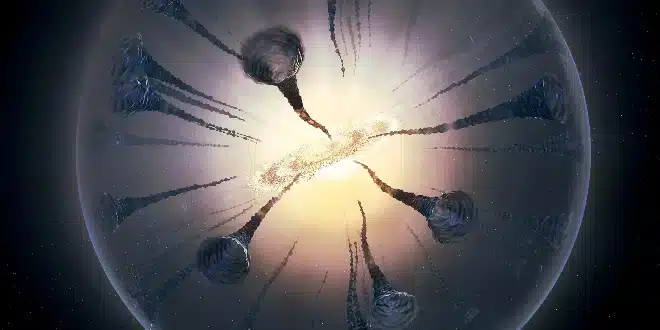Earth’s outermost layer might hold the key to solving one of the biggest mysteries in science: the existence of dark matter.
According to a new study, the Earth’s ionosphere may interact with hypothetical dark matter, emitting unique radio waves. This interaction suggests that ultra-light dark matter, far from being completely “dark,” could interact with normal matter due to the presence of plasma in the ionosphere.
The findings, published on arXiv, indicate that if scientists can refine techniques to detect these radio waves, it could significantly advance the study of dark matter.
**The Ionosphere and Dark Matter Interactions**
The study reveals that while dark matter usually interacts very weakly with normal matter, making detection almost impossible, there are rare occasions when the interaction is strong enough to produce detectable radio waves.
The research team proposed a model where such interactions could occur if dark matter encounters plasma, and the frequencies of dark matter waves align with those of plasma waves. This resonance could amplify the interaction, resulting in radiation in the form of radio waves.
**Plasma in the Universe and the Ionosphere**
Plasma, prevalent throughout the universe and emitted by stars as stellar wind, is the medium for these interactions. Remarkably, the new research identified an interaction point closer to home: Earth’s ionosphere.
The ionosphere, a thin, hot layer in the upper atmosphere, contains a loose collection of ionized (charged) particles, essentially forming a plasma. Natural waves ripple through this plasma, and the researchers found that these waves could interact with hypothetical dark matter waves that might be passing through Earth.
**Detecting Radio Waves from Dark Matter**
The radio waves resulting from this interaction would be faint, but researchers believe that with a precisely tuned radio antenna, monitoring a specific frequency over a year could reveal these signals.
This concept is groundbreaking because Earth’s ionosphere provides an accessible and already well-studied environment for detecting dark matter-produced radio waves. Furthermore, the ionosphere naturally reflects many radio waves from deep space, minimizing contaminating signals and making it an ideal location for such studies.


